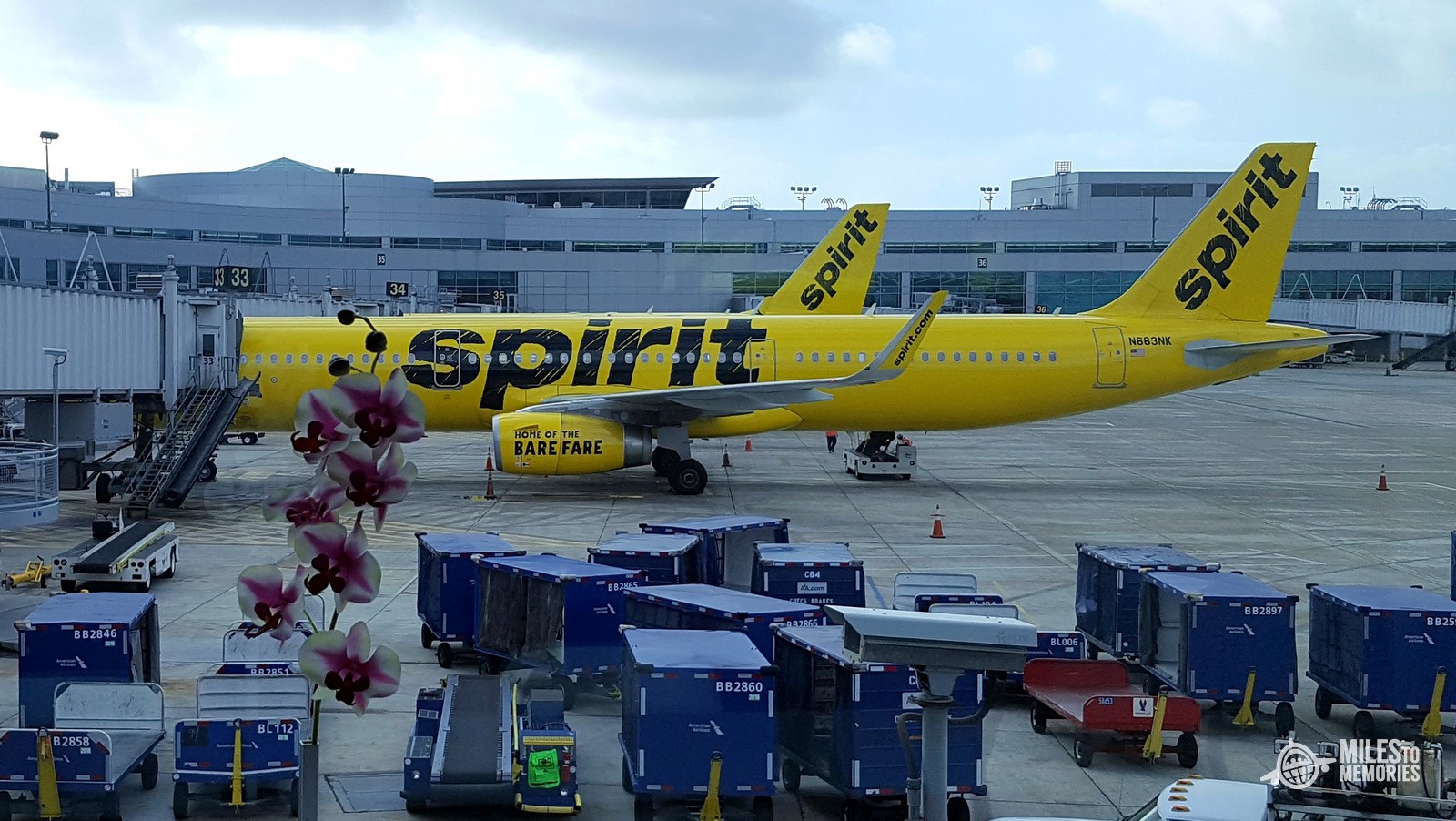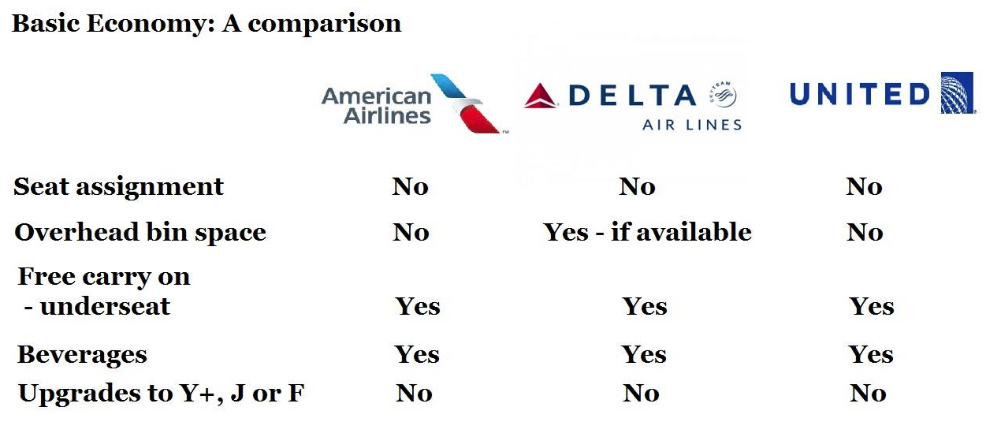
Today Senior Contributor R.D. Sussmann-Dewberry returns with a look at how the Big Four airlines are fighting Ultra Low Cost Carriers. He has previously written fantastic pieces about the modern rise of Delta, the new American Airlines, the History of Low Cost Carriers, United Airlines, the History of Air Shuttles, The Middle East 3, Alaska’s purchase of Virgin America, United’s Polaris and Slim Line Seats. R.D. has been involved with the airline industry for over 20 years and is an active travel consultant and airline analyst. R.D. is also a huge #Avgeek, a theme park enthusiast and a friend.
The Spread of Basic Economy Fares
Over the last few years, the upsurge in the ULCC marketplace has become a big enough threat that the majors have finally begun a retaliatory strike against these competitors. While it has been a long time coming, it was alluded to back in 2013 that any encroachment into the Big 4’s back yards would be met with force.
And they have – in a way.
Within the past 2 years, three of the big four have announced their plans for their implementation of the strike strategy to add a ‘Basic Economy’ fare to their systems – a fare designed and aimed at the discretionary traveler and his more price-sensitive nature of travel.
While the Big 4 aim for the frequent, higher fare traveler, the additional competitive nature of the ULCCs (and to a lesser extent LCCs, boutique carriers & even their own network carriers) has become something that can impact the success or failure of a given route’s profitability. With that in mind, let’s look at a few of the overall forces in play in the latest battle for the skies.
Lower Prices – Less Perks
Overall, the basic fares of these airlines are pretty much identical in many ways – limited to certain competitive markets where there is a ULCC presence against the existing network carrier’s routes. For those of us lucky enough to live in a major LCC/ULCC city, it means these fares are available on a regular basis. However, outside of these major markets, these fares are less likely to be available – at least for now.
As you can see, the comparison of the big three is pretty much identical, with only Delta allowing overhead bin space. Both American & United do not allow this – and as both will board the Basic Economy passengers last, they will require items to size-fit for underseat at the gate. If it doesn’t fit, you must submit… $25.00 for gate check – and in some cases, $25.00 for the baggage fee.
You read that right… up to $50.00 for that carry on that is just a wee bit too big to fit under the seat. However, if we compare it to the ULCC’s there may not be too much of a price difference: Spirit’s gate-check fee is $55.00 for use of an overhead bin per bag; Frontier’s is 60.00 for the same bag and Allegiant’s gate-fee is 45.00. Basically, United & American have copied directly from the ULCC’s fare book on that. The biggest difference is in how you can pre-purchase a carry-on at the ULCCs, something currently not available directly at United or American. Often, this does save money on the ULCCs – with some fees being as low as 10.00 (Allegiant) or 23.00 (Frontier & Spirit)
It should also be noted: All three do have a bit of flexibility for their respective tiered status members with regards to checked baggage fees. In some cases, the highest tiered members of the programs are exempt from the carry on baggage limit – provided they are of a high enough tier. Example: American allows a single carry on for their AAdvantage Elite members – as well as eligible Citi/AAdvantage card holders. The same is true of United – Where MileagePlus Premier & qualifying MileagePlus credit cards are exempt from the one carry on policy. United however also extends this courtesy to Star Alliance Gold and higher members.
The biggest difference – and this is aimed at these discretionary travelers is the frequent flyer programs – and their policies. All three have reduced/eliminated the direct benefits of these by throttling the EQMs & EQDs entirely out of the fare. In a way, this is a ploy to stop these fares from being used for valuable mileage runs or for other benefits. That being said, both mileage and fares DO qualify for account balances – something to think of if you need that little boost to get over the top for a major upgrade award. At the same time: Status in your respective FFP does not even exist when it comes to upgrades or related perks – the Basic Economy fares do not allow for any upgrades at any price.
As for on-board service, all three will retain their identical product to the rest of economy – with the related ‘frills’ of onboard audio/video/streaming. However, Delta’s does restrict the customer to only the standard TV/limited access program for the time being.
What Will Southwest Do?
As for Southwest – they too have begun to fire back at the ULCCs in their markets. While they are for the most part fee-free for most travel, they are counteracting in many city pairs where there is a high-number of ULCC threats with fares that are beyond bargain basement for those willing to look for them. Indeed, I see this in my hometowns of Atlanta, Las Vegas & Phoenix (The three most common places to spot me…) where with some adept skill one can land fares at below-bargain basement pricing.
Example: PHX-ATL for a weekend in February came to $162.00 R/T thanks to one of these ULCC-busting fares. PHX-LAS R/T for the end of March? $93.00 R/T – when the normal fare is usually around $100.00 each way. In some cases, it pays to do some hard-core fare searching.
Conclusion
Will these new fares break the ULCCs? Most likely not, but they do appear to make a clear statement: The majors are back, and they are pissed. And they are willing to do what it takes to ensure their survival – and that they can compete with the sprightly upstarts.




They really should brand this new “majors go after the ULCCs” idea. Maybe even the concept a name, like “Song” or something like that.
Competition is a beautiful thing. Options….and lower prices.
Can you tell me what fare classes are for basic economy of the big 4, how to tell the difference betw, say discounted economy.
As fare codes vary from carrier to carrier, this is a little more challenging to find. However, the general rule is that the fare class Q and lower is now reserved for basic economy. Y (domestically at least) is still the ‘standard’ full Y fare.
As the reservation systems become more diverse, there will be new codes for Premium Economy & Basic Economy. I’ll be covering that in a future column
R.D>
Thank you for qik reply, this is only for aa. Looks like B is the new basic economy. I flew a q from jfk-cdg in Feb for 360 Rt, I wonder how low can B go.
Economy Y, W^ 1.50 Yes 1.00
Economy H, K, M, L, W, V, G, Q, N, O, S 1.00 Yes 1.00
Basic Economy B 0.50 Yes
It should be also noted: Basic Economy is only on selected routes at this time – and that the final fare codes have not been settled up on yet. I should have noted this in the column, but I did not.
Internationally, they are still working on the fares & fare classes – as part of a larger plan to fight against the incoming wave of ULCCs on the Atlantic market.
R.D.